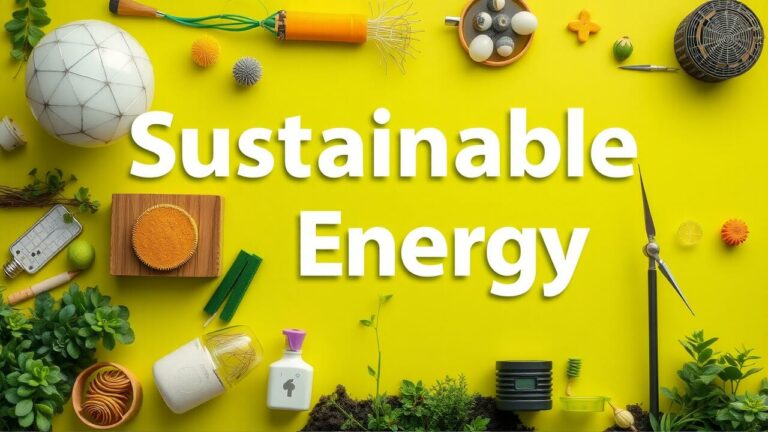Environmental Considerations in Petroleum Engineering
The extraction and processing of petroleum resources cast a long shadow over our environment, raising red flags that cannot be ignored. Habitat disruption, air and water pollution—these are stark realities of an industry grappling with the consequences of its actions. Greenhouse gas emissions loom large in this narrative, underscoring an urgent call for responsibility amidst the clamor for oil. Yet, amid these challenges, many companies are pivoting toward a more conscientious approach to their operations.
In this evolving landscape, innovative technologies and engineering practices spring forth like wildflowers after a storm—crafted not just for efficiency but to lessen ecological footprints. As the global drumbeat for sustainability grows ever louder, petroleum engineers find themselves at a crossroads: how to weave environmental considerations into every thread of project design and operational protocol? The answer lies in rigorous environmental impact assessments paired with best practices in resource management—a delicate dance between progress and preservation.
Furthermore, regulatory frameworks are shifting beneath our feet; they’re becoming increasingly stringent as society demands greater accountability in protecting our natural ecosystems. With continuous improvement in monitoring and reporting practices taking center stage, the industry must strive to balance resource extraction with genuine environmental stewardship—a complex tapestry woven from ambition and caution alike.
Mitigation Strategies for Oil Spills
Addressing the chaotic aftermath of oil spills demands a nuanced blend of foresight and swift action. Picture this: petroleum companies, armed with solid contingency plans, can spring into action at a moment’s notice, deploying resources like clockwork. Regular training drills for personnel? Absolutely crucial! They’re not just rehearsals; they’re lifelines that forge readiness in the face of potential calamities.
Now, let’s dive into technology—think cutting-edge gadgets like remote sensing tools and satellite imagery that elevate our early detection game to new heights. It’s all about catching those leaks before they balloon into crises. And don’t overlook the importance of a well-maintained fleet of specialized response vessels; these nimble crafts are vital for reaching affected areas swiftly, curtailing environmental damage before it spirals out of control.
But wait—there’s more! Enter bioremediation techniques—a refreshingly organic strategy harnessing microorganisms to gobble up oil compounds and hasten decomposition. Combine this with absorbent materials and containment booms that thwart oil from drifting away unchecked, enabling targeted cleanup operations that get right to the heart of the problem.
As we strive for continuous improvement in these methods—while adhering to rigorous regulatory standards—we fortify our dedication to protecting Mother Earth. And let’s not forget: involving local communities through education and collaborative response initiatives cultivates resilience and amplifies spill management success on multiple levels!
| Mitigation Strategy | Description | Benefits |
|---|---|---|
| Contingency Plans | Develop structured response plans for oil spills. | Ensures rapid response during incidents, minimizing environmental impact. |
| Training Drills | Regular simulations for staff to prepare for emergencies. | Enhances readiness and equips personnel with necessary skills. |
| Remote Sensing Technology | Utilizes satellites and drones for early detection of leaks. | Allows quick identification and response to potential spills. |
| Bioremediation Techniques | Uses microorganisms to naturally decompose oil compounds. | Environmentally friendly method for cleaning oil-polluted areas. |
| Community Involvement | Engaging local populations in education and response efforts. | Builds resilience and promotes collaborative management of oil spills. |
The Role of Sustainability in Petroleum Engineering
The petroleum industry finds itself under the relentless weight of mounting pressures, a veritable storm urging it to embrace sustainable practices as global consciousness about environmental dilemmas swells. Integrating sustainability into the very fabric of operations doesn’t merely appease public outcry; it’s also an essential maneuver for keeping pace with the ever-shifting landscape of regulations. Companies are on a quest, exploring innovative avenues to slash their carbon footprints and bolster resource efficiency while championing cleaner technologies.
Sustainable practices unfurl like a tapestry woven from myriad threads—everything from slashing waste during extraction processes to boldly investing in renewable energy sources. This holistic approach seeks equilibrium between energy production and environmental guardianship—a delicate dance that aims for harmony rather than conflict.
Moreover, weaving sustainability into the realm of petroleum engineering sparks collaborative synergies among diverse stakeholders. Picture partnerships blooming with governments, research institutions, and local communities—all converging to forge inventive solutions that serve both industry needs and societal advancement. Embracing these sustainable methodologies not only polishes corporate reputations but also draws in investments like moths to a flame while fortifying resilience against market upheavals.
In this evolving narrative, commitment to sustainability transforms from mere buzzword into an integral pillar of operational strategies—an undeniable cornerstone leading us toward a more sustainable horizon for the petroleum sector itself.
Balancing Energy Needs with Environmental Concerns
The pursuit of energy resources dances a precarious waltz with the pressing necessity to safeguard our environment. As the global thirst for energy swells dramatically, petroleum engineers find themselves at a crossroads, grappling with the escalating challenge of crafting innovative solutions that tread lightly on our ecological landscapes. Picture strategies like enhanced oil recovery techniques and cleaner extraction methods—these are not just buzzwords; they’re lifelines aimed at lessening environmental repercussions while still satisfying our voracious appetite for energy.
Imagine a world where environmental assessments weave seamlessly into project blueprints—this is the ambitious goal engineers strive toward, striving to harmonize energy production with sustainable practices. But here’s where it gets even more intricate: collaboration becomes paramount! A tapestry woven from industry stakeholders, regulatory bodies, and environmental advocates holds immense potential in striking this delicate balance. Engaging in rich dialogue ensures that every facet of an energy initiative considers environmental stewardship from its very genesis right through to its conclusion.
And let’s not overlook the blossoming realm of renewable energy technologies! These can emerge as invaluable allies in reducing reliance on fossil fuels, paving pathways toward a diversified and sustainable energy portfolio. This proactive mindset doesn’t merely tackle the looming specter of energy security; it also cultivates public trust and reinforces regulatory compliance within the ever-evolving landscape of petroleum engineering operations. It’s a multifaceted approach brimming with possibilities—a dance between progress and preservation!
- Implement advanced technologies for cleaner extraction processes.
- Prioritize environmental impact assessments at every project stage.
- Foster collaboration among industry stakeholders, regulatory agencies, and environmental organizations.
- Invest in research and development of renewable energy alternatives.
- Advocate for policies that support sustainable energy practices.
- Educate the public about the importance of balancing energy needs with ecological health.
- Encourage transparent communication about energy projects and their environmental implications.
The Impact of Digital Technologies
Digital technologies have thrown the petroleum engineering world into a whirlwind of transformation, elevating efficiency and safety to new heights while simultaneously slashing costs. Picture this: advanced software solutions seamlessly weaving their way into the fabric of drilling operations, enabling real-time oversight that turbocharges decision-making like never before. Automation swoops in, sweeping away tedious workflows and drastically cutting down on human error—freeing up engineering teams to dive into strategic endeavors instead of drowning in monotonous tasks.
But wait, there’s more! The rise of artificial intelligence coupled with big data analytics is flipping the script on how we interpret and wield data. Imagine intelligent algorithms churning through mountains of geological and operational information, unearthing insights that not only spark exploratory triumphs but also supercharge operational efficacy. With enhanced data visualization tools at their fingertips, engineers can peel back layers on intricate subsurface conditions—leading them straight to informed decisions that are anything but ordinary.
As the industry fully embraces these groundbreaking technological strides, it becomes strikingly clear: we’re standing at the precipice of unprecedented productivity and sustainability potential!
Integration of AI and Big Data in Petroleum Engineering
The confluence of artificial intelligence (AI) and big data analytics within the realm of petroleum engineering is poised to unleash a seismic shift across myriad facets of the industry. Picture this: sophisticated algorithms, like nimble dancers, waltzing through immense troves of geological and operational data in real-time—an exhilarating enhancement to decision-making processes that were once tethered to slower, more cumbersome methods. Enter predictive maintenance, fueled by machine learning’s uncanny ability to peer into the future; it forecasts equipment failures with remarkable accuracy, slashing downtime and transforming how companies manage their resources. This forward-thinking strategy not only boosts operational efficiency but also carves out significant cost savings for businesses navigating these turbulent waters.
But wait! The wonders don’t stop there. AI-powered models emerge as savvy navigators in optimizing production strategies; they sift through historical data trends with an eagle eye for patterns that might slip past even the most astute human analysts. Particularly in the realms of exploration and drilling—a high-stakes game where pinpoint accuracy can unveil untapped reserves—this capability becomes invaluable. And let’s not overlook big data’s prowess; it equips professionals with profound insights into market dynamics, paving the way for smarter planning and resource allocation decisions. The ripple effects of these groundbreaking technologies hint at a future brimming with enhanced productivity and sustainability in the ever-evolving landscape of petroleum engineering—a transformation waiting just beyond the horizon!
Challenges Facing the Petroleum Industry
The petroleum industry finds itself ensnared in a labyrinth of challenges that profoundly affect its operations and long-term viability. Market volatility looms large, a relentless specter fueled by the wild swings of oil prices and the ever-shifting sands of geopolitical tensions. This chaotic landscape complicates financial forecasting for companies, often stalling investments that could otherwise propel exploration and production forward. Compounding this dilemma are escalating regulatory pressures; governments across the globe are tightening their grip with stricter environmental mandates aimed squarely at combating climate change. Such regulations can inflate operational costs and demand significant technological upgrades—yet another hurdle for companies striving to keep pace in an increasingly competitive arena.
Resource scarcity has emerged as yet another daunting challenge on this turbulent horizon. With easily accessible oil reserves dwindling, the industry is forced to pivot toward more intricate extraction techniques—think deepwater drilling or unconventional sources like shale oil—which come laden with higher financial stakes and environmental risks. And just when you think it couldn’t get trickier: fluctuating demand for fossil fuels amidst a sweeping global transition towards renewable energy raises unsettling questions about the industry’s long-term sustainability. Companies find themselves navigating this shifting market landscape while simultaneously ensuring dependable energy production for an insatiably growing global populace—a dual task fraught with complexity and urgency!
Addressing Market Volatility and Resource Scarcity
The petroleum industry finds itself ensnared in a web of formidable challenges, marked by the capricious nature of market volatility and the looming specter of resource scarcity. Picture this: global oil prices dance erratically, weaving uncertainty for producers and consumers alike—a chaotic tango driven by geopolitical tensions that simmer beneath the surface, economic shifts that reshape demand overnight, and an ever-changing tapestry of energy alternatives vying for attention. Each twist and turn sends ripples through investment decisions and operational strategies, ultimately casting long shadows over profitability and long-term viability.
As if that weren’t enough, resource scarcity adds another layer to this intricate puzzle; accessible reserves dwindle like mirages in a desert while exploration costs soar to dizzying heights. Companies are compelled to pivot—injecting capital into cutting-edge extraction technologies and striving to enhance recovery rates from aging fields as if they were unearthing buried treasure. Moreover, fostering collaboration among diverse industry stakeholders sparks innovative solutions capable of mitigating risks associated with supply chain disruptions—a concerted effort that could transform adversity into opportunity. Embracing sustainable practices emerges as not just beneficial but essential for charting a course through these turbulent waters—ensuring energy security while upholding our duty towards environmental stewardship amidst an unpredictable future.
Future Trends in Petroleum Engineering
The petroleum industry stands at a fascinating crossroads, a realm where cutting-edge technology weaves an intricate tapestry of change—none more so than through the marriage of artificial intelligence and big data analytics. Imagine engineers sifting through mountains of geological and operational information with the ease of flipping pages in a book! It’s not just analysis; it’s like wielding magic wands that predict equipment malfunctions before they occur, streamline drilling operations to their most efficient selves, all while orchestrating cost reductions that dance hand-in-hand with enhanced productivity. This whirlwind of innovation doesn’t merely tidy up workflows; it ushers in an era marked by safer practices and a greater commitment to environmental stewardship within this dynamic sector.
But hold on—there’s more! A pivotal shift is underway as sustainability takes center stage, reflecting our collective yearning for cleaner energy solutions amid increasing global pressures. Picture petroleum engineers donning the hats of eco-warriors, exploring alternative extraction techniques that tread lightly upon our planet. Innovations leap forth: carbon capture technologies entwined with renewable energy advancements are now the lifeblood fueling future ventures. Herein lies the challenge—a delicate balancing act ensuring oil and gas operations harmonize with lofty sustainability objectives while ardently addressing our insatiable thirst for energy. The narrative unfolds—a tale rich with complexity and vibrant potential!
Innovations Shaping the Industry Landscape
The landscape of petroleum engineering is undergoing a seismic shift, driven by the whirlwind of advanced technologies. Picture this: extraction processes are not just becoming more efficient; they’re morphing into something almost futuristic, where safety takes center stage. Automation and robotics? Oh, they’ve become the unsung heroes of drilling operations! With an uncanny precision that leaves little room for error, these machines are stepping in to shield humans from the perils lurking in hazardous environments.
Now, let’s talk about real-time monitoring systems—these marvels utilize a symphony of sensors and IoT devices to keep tabs on environmental conditions like hawks eyeing their prey. The result? An instantaneous reaction to any potential hiccups that might arise. It’s all about optimization here: companies harness these technological wonders to trim waste and slash emissions as if they were managing a tight budget.
But wait—there’s more! Enter predictive analytics, striding boldly onto the scene and transforming decision-making with its wizardry. By tapping into the treasure trove of big data at their disposal, engineers can peer into the future—anticipating equipment failures before they wreak havoc and pinpointing maintenance needs with surgical accuracy. It’s like having a crystal ball for streamlining operations while extending the lifespan of essential assets!
And let us not overlook machine learning algorithms—they’re sifting through colossal datasets with finesse, uncovering patterns that serve as guiding stars for exploration and production strategies alike. These cutting-edge innovations empower the industry to pivot gracefully amidst shifting market demands while steadfastly upholding commitments to sustainability and environmental stewardship—a delicate dance indeed!
Conclusion
The realm of petroleum engineering is poised at a fascinating crossroads, intricately entwined with the relentless march of technology and an increasingly fervent embrace of sustainability. As this sector grapples with the twin forces of escalating energy demands and urgent environmental concerns, a cornucopia of innovative solutions will spring forth as vital instruments in its toolkit. This transformation beckons for a proactive stance on integrating cutting-edge digital technologies—think artificial intelligence dancing harmoniously with big data analytics—boosting efficiency while reinforcing safety across operations.
Yet, professionals within this dynamic field must don their chameleonic hats, ever ready to adapt and respond to the mercurial nature of market conditions and evolving regulatory landscapes. A tapestry woven from collaboration among various stakeholders will be essential; such alliances can spark the creation of robust strategies aimed at risk mitigation while seizing golden opportunities that lie ahead. By placing sustainability and ethical practices front and center, the petroleum industry stands at a pivotal moment—a chance not just to shape global energy solutions but also to tread lightly upon our planet’s delicate ecological canvas.






